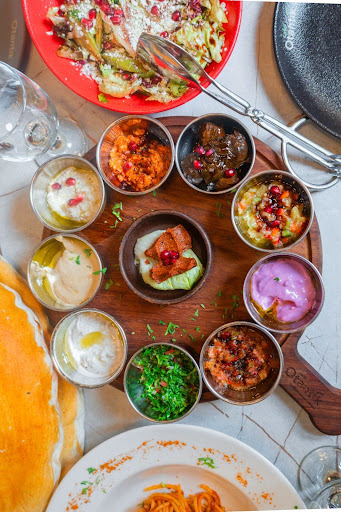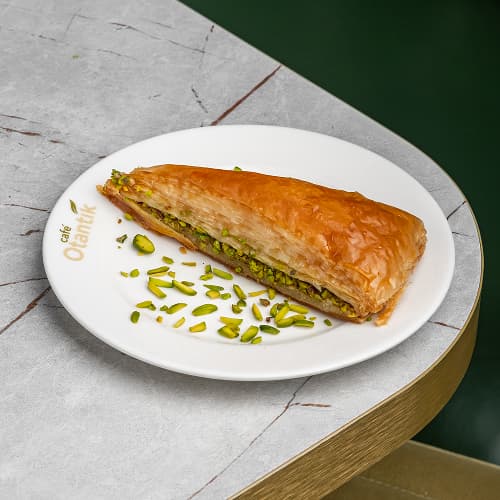What if the most important meal of your day could also be a two-hour journey of flavor, connection, and pure joy? In Turkey, breakfast is not just a quick bite before work. It is a cherished ritual, a social event, and a vibrant display of some of the country’s best foods. Known locally as “kahvaltı,” which literally means “before coffee,” this meal is a feast for the senses. This guide will walk you through everything that makes a Turkish breakfast a unique and unforgettable experience, from the essential dishes and drinks to the deep-rooted traditions that surround it.
What is a Turkish Breakfast?
A Turkish breakfast is a sprawling, celebratory meal featuring a wide array of small plates. The goal is variety and sharing. Think of it as a buffet of fresh, savory, sweet, and flavorful items laid out across the table for everyone to enjoy together. It is a meal that encourages you to slow down, talk, and savor every single bite. The foundation is always built on fresh ingredients like tomatoes, cucumbers, olives, and a stunning selection of cheeses. From there, you add delicious pastries, eggs cooked in different ways, and plenty of homemade jams and spreads. It is a meal that truly has something for everyone.
The Essential Components of the Spread
No two Turkish breakfast tables look the same, but they all share a common set of stars. Let’s break down the key players you will always find.
The Cheese Platter: A Savory Foundation
No Turkish breakfast is complete without a selection of cheeses. You will typically find at least three different kinds. Beyaz peynir, a brined white cheese similar to feta, is the most common. Then there is kaşar, a mild, yellow cheese that is often enjoyed alone or melted in dishes. Another favorite is lor, a fresh, low-fat cheese similar to ricotta, which is sometimes mixed with herbs. These cheeses provide a salty, savory base that balances the other flavors on the table.
The Fresh Vegetable Selection
A plate of sliced fresh vegetables is non-negotiable. This almost always includes crisp cucumbers, juicy tomatoes, and sometimes green peppers or radishes. These veggies are not just a garnish; they are meant to be eaten freely, offering a refreshing and crunchy contrast to the richer cheeses and pastries. They add a vital element of freshness and health to the entire spread.
Olives and Greens
A small bowl of olives is another cornerstone of the meal. Both green and black olives are common, often marinated with herbs like thyme or oregano and a splash of olive oil. You might also find fresh greens like arugula or parsley, which can be eaten alongside the cheese or wrapped in a piece of bread. These elements bring a briny, peppery note to the table.
Jams, Honey, and Kaymak
This is where the sweetness comes in. No Turkish breakfast is complete without a few homemade jams. The most famous is çilek reçeli, or strawberry jam, but cherry, apricot, and rosehip are also very popular. Next to the jam, you will often find a truly special treat: honeycomb or thick cream known as kaymak. Kaymak is a clotted cream made from water buffalo or cow’s milk, with a rich, buttery texture. The classic way to enjoy it is to spread kaymak on bread and drizzle it generously with honey for a perfect mix of creamy and sweet.
Eggs: The Warm Centerpiece
While the cold dishes form the base, a warm egg dish is the heart of a traditional Turkish breakfast. There are two main ways this is prepared. One is a simple fried or boiled egg. The other, and more celebrated, is a dish called menemen. This is a hearty and flavorful scramble of eggs cooked with tomatoes, green peppers, and spices, often served sizzling in its own pan. It is a comforting and delicious dish that brings warmth to the whole meal.
Breads and Pastries: The Vehicles of Flavor
All these delicious foods need something to be eaten with, and that is where bread comes in. Fresh, crusty white bread is a staple. But the king of Turkish breakfast breads is simit. This is a circular bread, similar to a bagel, encrusted with sesame seeds. It is crunchy on the outside and soft on the inside, perfect for dipping into jam, cheese, or an egg yolk. Another common pastry is börek, a flaky, savory pie made with thin layers of dough called yufka and filled with cheese, spinach, or minced meat.
The Drinks: Fuel for Conversation
What you drink is just as important as what you eat during a Turkish breakfast.
Turkish Tea: The Lifeblood
The undisputed champion of Turkish breakfast drinks is tea, or çay. It is not just a beverage; it is the glue that holds the entire experience together. Turkish tea is a black tea brewed in a special two-tiered pot and served in small, tulip-shaped glasses. It is strong, aromatic, and usually drunk with sugar. The tea is constantly refilled throughout the long meal, fueling conversation and connection. You simply cannot have a proper Turkish breakfast without it.
Turkish Coffee: A Strong Finish
While tea is drunk throughout the meal, coffee typically comes at the end. Turkish coffee is a unique method of preparation where very finely ground coffee beans are boiled with water and sugar in a small pot called a cezve. It is served in a small cup, and the grounds are left in, creating a thick, potent, and flavorful drink. It is a strong and symbolic way to finish the feast.
The Culture and Tradition of Kahvaltı
Understanding the food is only half the story. The true spirit of a Turkish breakfast lies in its tradition.
A Social and Leisurely Affair
A Turkish breakfast is rarely a rushed, solitary event. It is a social ritual, typically enjoyed on weekends when families and friends have time to gather. The meal can last for hours, with people talking, laughing, and eating slowly. It is as much about nourishing relationships as it is about nourishing the body. The table is a place of community and connection.
The Meaning of “Kahvaltı”
The word “kahvaltı” itself is deeply revealing. It breaks down into “kahve altı,” meaning “under the coffee” or “before coffee.” This comes from the old tradition that the first coffee of the day should only be drunk after you have properly eaten. So, the entire breakfast is literally the foundation you build before you enjoy your first cup of strong Turkish coffee.
Bringing the Turkish Breakfast Home
You do not have to travel to Turkey to experience this incredible meal. Creating your own version at home is easier than you think. Start by gathering a few key components: a couple of types of cheese, some fresh cucumbers and tomatoes, a bowl of olives, and a jar of good honey or jam. For the main event, try your hand at making a simple menemen. Brew a strong pot of black tea, set everything out on small plates, and invite your loved ones to share and graze. The key is in the variety and the spirit of togetherness.
Experience an Authentic Turkish Breakfast at Otantik
After reading about this magnificent feast, you are probably craving the real thing. You can experience a truly authentic and beautifully presented Turkish breakfast in Dubai. At Otantik Restaurant, we pride ourselves on bringing the genuine taste and spirit of Turkey to your table. Our chefs use traditional recipes and the finest ingredients to create a breakfast spread that will transport your senses. From our perfectly prepared menemen and fresh, sesame-crusted simit to our endless cups of aromatic Turkish tea, every detail is crafted for an unforgettable experience. Gather your friends and family and indulge in a leisurely breakfast that is a celebration of flavor and culture. For reservations or to view our full menu, follow us on Instagram at @otantikae. To book your table, call 056 9952899.
Frequently Asked Questions
1.What are some common vegetarian options in a Turkish breakfast?
A Turkish breakfast is a paradise for vegetarians. The vast majority of the spread is plant-based, including the many varieties of cheese, all the fresh vegetables, olives, jams, honey, breads like simit, and pastries like cheese-filled börek. The classic menemen dish is also naturally vegetarian.
2.Is a Turkish breakfast considered a healthy meal?
Yes, it can be very healthy. The meal is built around whole foods like fresh vegetables, olives, and lean proteins from cheese and eggs. The use of olive oil and herbs is also beneficial. You can control the healthiness by moderating intake of bread and very sweet jams.
3.How does a Turkish breakfast differ from a standard Continental breakfast?
While a Continental breakfast is often light and simple with pastries and coffee, a Turkish breakfast is a much larger, savory-focused feast. It includes a wide array of cheeses, vegetables, olives, and egg dishes, making it a more complete, balanced, and social meal experience.
4.What is the proper way to eat simit bread during breakfast?
There is no single right way. Most people tear off a piece of the simit and use it to scoop up cheese, jam, or a bite of egg. It is perfectly acceptable to eat it plain as well, enjoying its crunchy sesame seed coating and soft interior.
5.Can you find variations of Turkish breakfast in different regions of Turkey?
Absolutely. Regional variations are fascinating. For example, in the Black Sea region, breakfasts often feature cornbread and anchovies. In the southeast, near Van, the breakfast is famous for including a unique herb cheese and a wider variety of hot dishes, showing how local ingredients shape the meal.







